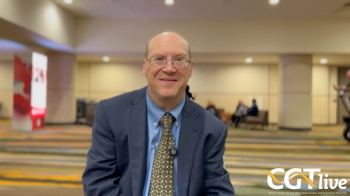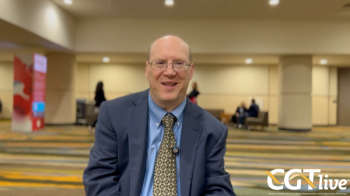
Gene Therapy for Diabetic Macular Edema Shows Mixed Efficacy, Safety
Findings from the phase 2 INFINITY trial identified dose-dependent safety outcomes of ADVM-022 in patients with diabetic macular edema.
This content originally appeared on our sister site,
Investigators from the phase 2 infinity trial assessing ADVM-022, a gene therapy for the treatment of diabetic macular edema (DME), have identified dose-dependent safety factors that may influence direction of investigation into the promising therapy in patients with retina diseases.
These findings were presented at the
“It has already been said that ADVM-022 is a novel biofactory approach to gene therapy,” Boyer said. “There is a strong, ubiquitous promoter that is designed for robust protein expression, liberating aflibercept from ourselves.”
The prior OPTIC study has shown that patients with nAMD previously required frequent injection therapy to maintain vision. What’s more, investigators observed a 97% reduction in mean annualized number of anti-VEGF injections among the 15 patients with nAMD administered 6E11 vg/eye ADVM-022—while mean best corrected visual acuity (BCVA) and central subfield thickness (CST) levels were maintained.
READ MORE:
OPTIC also showed no patients treated with ADVM-022 reported treatment-related non-ocular adverse events. All treatment-related ocular adverse events were either mild (83%) or moderate (17%) in severity. Ocular inflammation at the 2x1011 vg/eye dose regimen was “minimal,” and generally resolved with steroid eye drops.
The robust findings of this trial led to the phase 2 INFINITY, in which Boyer and colleagues sought the durability, safety and efficacy of intravitreal ADVM-022 injection in 34 patients with DME. Investigators compared high dose (6x1011 vg/eye), low dose (2x1011), and control for time to worsening of DME disease in the study eye at 24 weeks.
Patients were screened and randomized, then received a loading dose injection of either sham or aflibercept 2 mg. Investigational gene therapy injections were given at day 8.
Over 24 weeks, just 3 (25%) and 5 (39%) patients on high-dose and low-dose ADVM-022 required a supplemental aflibercept injection to address worsening DME at week 24, versus 8 (89%) patients administered aflibercept.
What’s more, nearly half of patients (46%) in each ADVM-022 treatment arm reported a ≥2 step improvement in diabetic retinopathy severity scale (DRSS) scores at week 12. Another 18% and 36%, respectively, achieved a ≥3 step improvement by week 24.
That said, more gene therapy-treated patients in the phase 2 trial reported intraocular inflammation: 83% and 92% of the high- and low-dose group, respectively, reported any inflammation, versus just 33% of aflibercept patients. ADVM-022-related adverse events were 57% mild, 41% moderate, and 2% severe.
Across OPTIC and INFINITY, investigators observed dose- and disease state-dependent factors on ADVM-022 efficacy and safety in patients with either nAMD or DME. Boyer stated future development plans for the gene therapy will focus on the treatment of nAMD, and a lower doses.
“The difference between the safety seen in OPTIC and INFITIY is being studied, but is unknown,” Boyer concluded.
The study, “Results From a Phase 2 Study of ADVM-022 Intravitreal Gene Therapy for Diabetic Macula Edema: The INFINITY Trial,” was presented at AAO 2021.
Newsletter
Stay at the forefront of cutting-edge science with CGT—your direct line to expert insights, breakthrough data, and real-time coverage of the latest advancements in cell and gene therapy.

















































